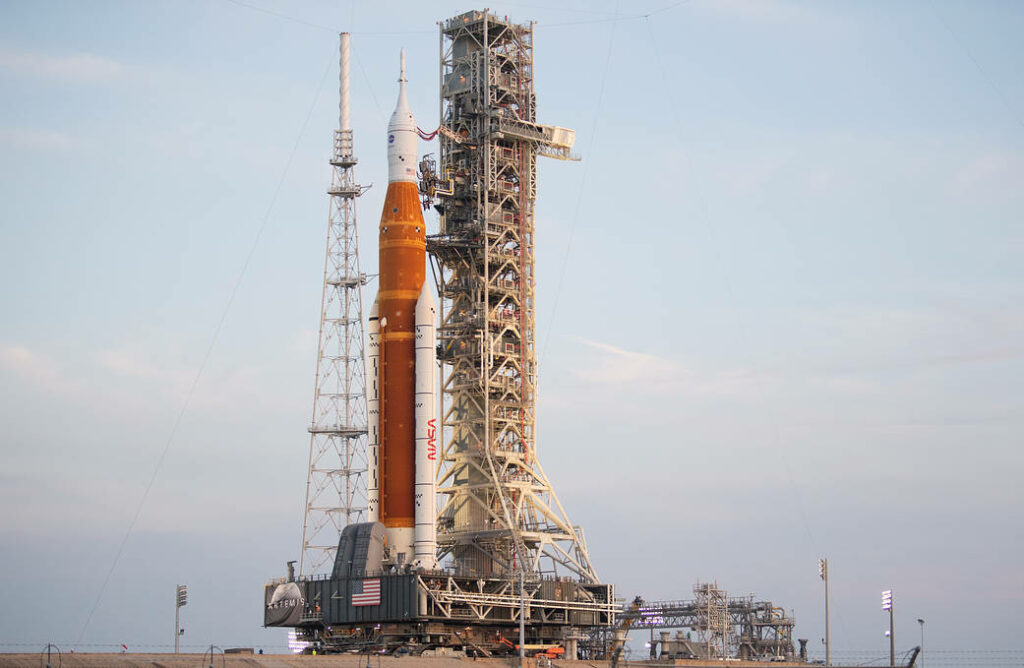The independent agency of the United States federal government responsible for the civil space program NASA, in cooperation with the European Space Agency (ESA), will launch the Orion spacecraft from the Kennedy Space Center for a flight around the moon on Monday.
The launch marks the send-off of the most powerful rocket ever put together and heralds the start of NASA's long-awaited return to the surface of the moon. The Artemis missions plan to re-establish human contact on the moon in 2025 for the first time since the last Apollo missions in 1972.
Importantly, NASA will land the first woman and person of colour in 2025.
"This day has been a long time coming," said NASA’s associate administrator Robert Cabana after mission managers finished a flight readiness review last week. "We are a go for launch, which is outstanding."
With a journey expected to last for more than a month around the moon, the Artemis I mission is a notable turning point for NASA's lunar expeditions. Although the Artemis I will not carry astronauts, nor land on the moon on its rocket launch on Monday, the mission will test NASA's powerful rocket and deep-space capsule, a successor to the space shuttle.
A successful mission will enable NASA to send two astronauts, to land at the moon's south pole by the end of 2025
Flying to the moon and back
The scheduled test flight has a two-hour window to launch and will fly for 42 days on a 2,1 million kilometre journey to the far side of the moon and back, including two close fly-bys above the surface of the moon.
Monday's flight will send two dummies, called Helga and Zohar, who will sit in the passenger seats. The two figures are packed with 5,600 sensors to measure phenomena such as radiation on their voyage to the moon.

Artemis I step-by-step mission. Orion is NASA’s next spacecraft to send humans into space. It is designed to send astronauts farther into space than ever before, beyond the Moon to asteroids and even Mars. Credit: ESA
Hundreds of thousands of spectators are expected to flock to Florida's space coast to watch the send-off, in which NASA is eager to show the progress it has made in getting astronauts back on the moon again.
An interim second test flight, Artemis II, is planned for May 2024, to carry a crew of four to the moon and back, although this mission will not land on the surface. However, it would mark the first time humans would be beyond low Earth orbit since Apollo 17 in December 1972.
A new generation of lunar missions
Almost 50 years ago now, the mission included the last two of the 12 people, all men, who have walked on the moon, Harrison Schmitt and Eugene Cernan.
“This is now the Artemis generation. We were in the Apollo generation. This is a new generation. This is a new type of astronaut,” Bill Nelson, the NASA administrator and a former space shuttle astronaut, said at a press briefing earlier in August.
Related News
- A storm from space? Dark plasma hits earth today
- Being an astronaut ‘not just a job but a passion’: Belgium sees its future among the stars
- Ancient galaxies: NASA shares most detailed view of early universe
Noting the symbolism in the name of the program – in Greek mythology, Artemis is the twin sister of the sun god Apollo – he added: “To all of us who gaze up at the moon, dreaming of the day humankind returns to the lunar surface … folks, we’re here.”
Later on, Artemis would create a permanent base on the moon for possible mining and as a jumping point for missions to Mars.
Take-off is set for 14:33 Central European Summer Time and can be watched here.

